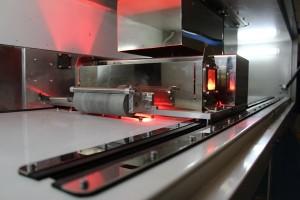Results 1 to 3 of 3
-
03-25-2014, 03:20 PM #1
Breakthrough: FACTUM 3D HSS Printer, Prints Objects in Under a Second
This is quite an amazing story.... A new 3D Printer called FACTUM, which uses a patented new technology called High Speed Sintering to 3D print objects within a second. That's right, it can print objects the size of a human finger in under one second. It uses a heat lamp which melts polymer powder at speeds unheard of with traditional 3d printing technology.
http://3dprint.com/1786/new-factum-h...nder-a-second/
The printer was created by researchers at Sheffield and Loughborough Universities, with the help of Xaar's inkjet technology. Details are just becoming available, but this could be a major breakthrough in speeding up the print process. Here is the only available picture of the FACTUM 3d printer:

-
03-25-2014, 03:56 PM #2
Very interesting. I can't wait to see this thing in action. Hopefully this is the breakthrough that the industry has been needing.
-
03-25-2014, 09:01 PM #3Banned

- Join Date
- Sep 2013
- Posts
- 159
Here is an older video I dug up that shows the High speed sintering process:
According to 3ders, this is how HSS works:
The first section of the build cycle starts with the roller assembly traversing from left to right depositing a new layer of powder onto the part bed. The roller assembly then travels back in the opposite direction and in this swathe, the print heads jet the first of the monochromatic bitmap images onto the part bed using a Radiation Absorbent Material (RAM). Simultaneously the Infra-Red (IR) lamp exposes the entire part bed to IR energy.
Within this part of the cycle the RAM absorbs sufficient thermal energy from the tailored IR lamp to cause underlying polymer particles to melt and fuse together, creating a 2D layer.
Conversely, although subject to the same amount of thermal energy, the unprinted regions within the part bed do not absorb sufficient energy to fuse together and consequently, remain as a powder and support the geometries being manufactured.
The entire cycle is then repeated, printing and sintering new layers together and to the layers below until all geometries have been manufactured. The machine is then left to cool down, parts are removed from the cake and cleaned.






 Reply With Quote
Reply With Quote






Extruder not feeding during print,...
Yesterday, 01:59 AM in Tips, Tricks and Tech Help